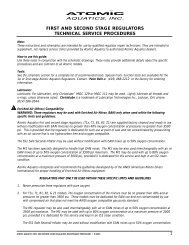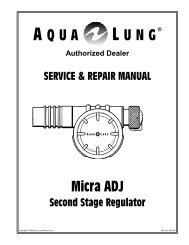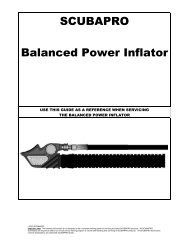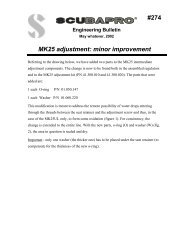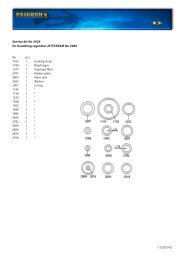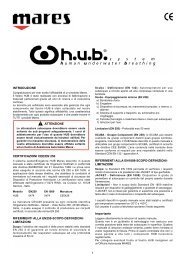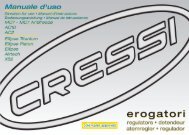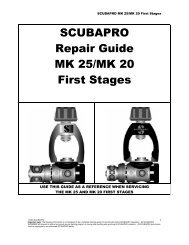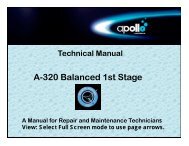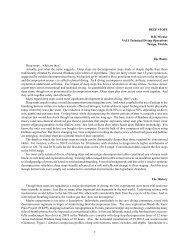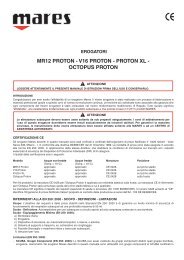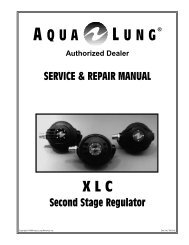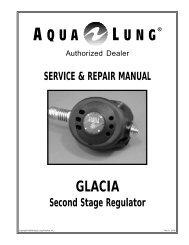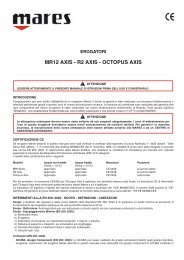SRB5600.pdf1687 KBytes - Frogkick.dk
SRB5600.pdf1687 KBytes - Frogkick.dk
SRB5600.pdf1687 KBytes - Frogkick.dk
Create successful ePaper yourself
Turn your PDF publications into a flip-book with our unique Google optimized e-Paper software.
The sealing surface on the body where the one-way valve seals must be totally clean of<br />
deposits. If any deposits remain on the sealing surface after initial cleaning, take a fine abrasive<br />
polishing stick or and polish the surface to remove deposits (see Photo #3).<br />
Photo #3<br />
15. Blow all residue from the body after polishing.<br />
16. Remove the large O-ring 25 from the cap 26 . This O-ring can usually be reused.<br />
17. If necessary, clean all metal parts of the first stage except the flow control element assembly<br />
18 in an ultrasonic cleaner or cleaning solution. Remove the O-rings before cleaning any metal<br />
parts; most cleaning solutions can damage the O-ring material. See Section 6.3 for<br />
recommendations on cleaning solutions. If major visible corrosion or deposits exist on parts,<br />
use a bristle brush, wooden, or plastic stick to rub the deposits off. Allowing acidic cleaning<br />
solutions to do all of the work if deposits are severe, will result in damage to internal chrome<br />
plating which will make parts even more susceptible to future corrosion.<br />
18. Remove the regulator parts from the cleaning solution. Blow all internal passageways dry with<br />
clean, dry compressed air.<br />
19. Inspect the bores in which the piston and orifice O-rings move for corrosion or wear. If the<br />
bores are leaking air because of wear, replace the parts. If some corrosion deposits persist,<br />
carefully wipe them away with a plastic scrubbing cloth. Blow any resulting dust out of the<br />
regulator parts.<br />
20. Remove and discard the black O-ring from the moving orifice 4 . Save the white backup<br />
washer; it can be reused. Inspect the moving orifice’s sealing surface (located at the top edge<br />
of the orifice cone). Any nicks, scratches, or corrosion at the top of the cone can allow air to<br />
pass, which will result in creeping hose pressures. Polish out the defects using a fine abrasive<br />
polishing stick or pencil eraser. When polishing, apply a light pressure to prevent excessive<br />
wear on the cone. Use compressed air to blow away any dust created by the polishing<br />
process.<br />
8



